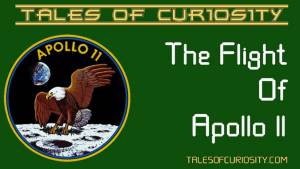| ||||||
| Running Time: | 5:59 | Release Date: | ||||
| Since 1961, there have been many astronauts and cosmonauts, but only 24 men have left Earth's orbit. They were the chosen few, who flew to the moon. We list each of them here, along with their missions. | ||||||
About The Video |
Introduction |
In 1961, Yuri Gagarin became the first man in space. Since that time there have been many astronauts and cosmonauts, but only 24 men have ever left Earth's orbit. They were all taking part in the Apollo program, to send man to the moon.
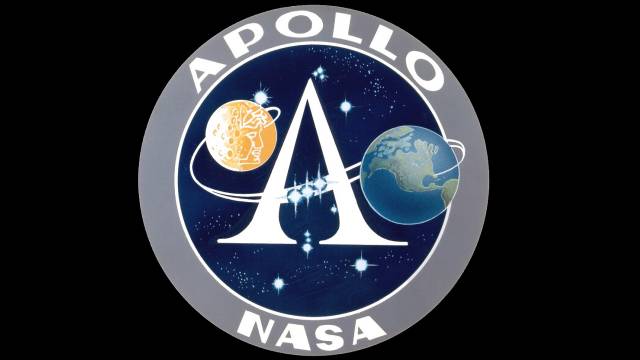
These chosen few have viewed sights never seen by humans before, or since.
It is only from outside of Earth's orbit that Earth be seen as a sphere. Astronauts orbiting Earth can see the curvature of the Earth's surface, but do not see the whole Earth.
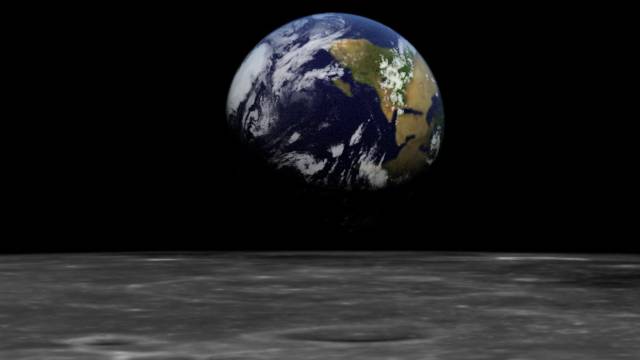
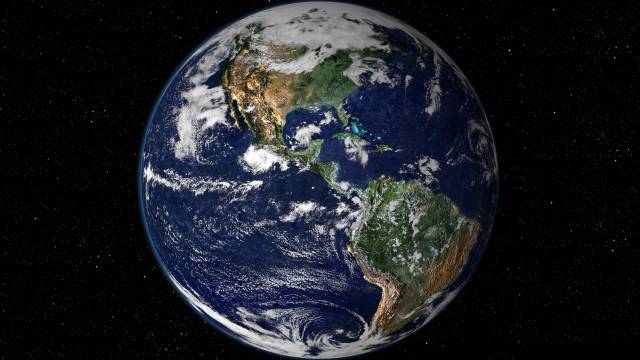
Due to the speed of the moon's rotation, we only ever see one side of its surface. These astronauts viewed the dark side of the moon, as they orbited it.
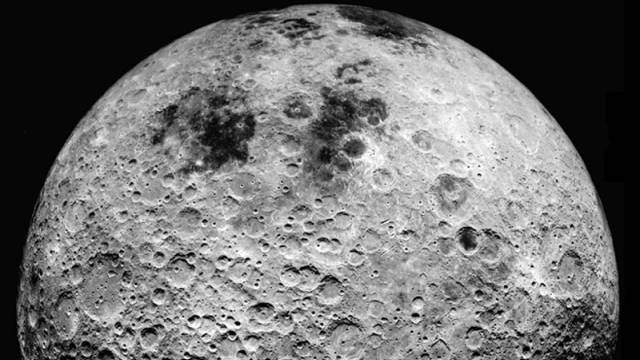
Apollo 8 |
| Launched: | 21 December 1968 |
| Returned: | 27 December 1968 |
| Mission: | Lunar Orbit and Return |
| Commander: | Frank Borman |
| Senior Pilot: | Jim Lovell |
| Lunar Module Pilot: | William Anders |
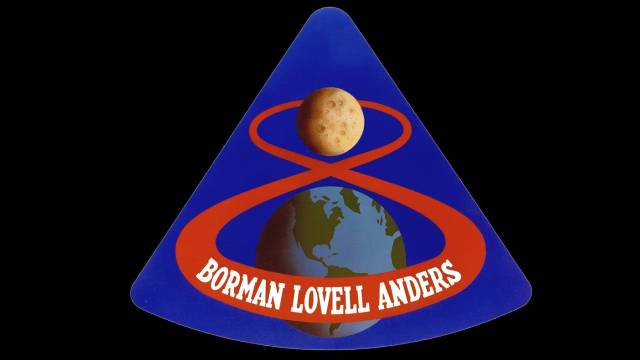
Apollo 8 was the second manned Apollo mission and the first spacecraft to take humans out of Earth's orbit. The journey took three days, the craft then made 10 orbits of the moon before its return voyage.
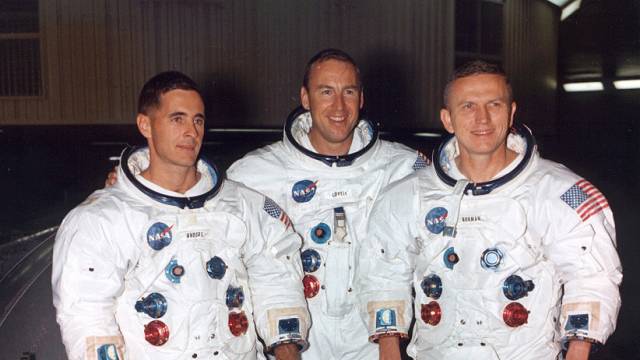
Apollo 8 was a highly successful mission and showed that the Apollo Program was on course for an eventual lunar landing,
Apollo 10 |
| Launched: | 18 May 1969 |
| Mission: | Lunar Orbit and Return |
| Returned To Earth: | 26 May 1969 |
| Commander: | Thomas P. Stafford |
| Command Module Pilot: | John Young |
| Lunar Module Pilot: | Eugene Cernan |
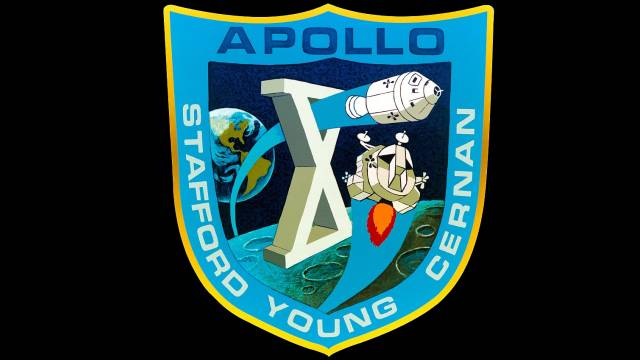
Apollo 10 was a dress rehearsal for the Apollo 11 lunar landing mission and tested all the procedures and components. The lunar module was taken to within 8.4 nautical miles (15.6 km) of the lunar surface.
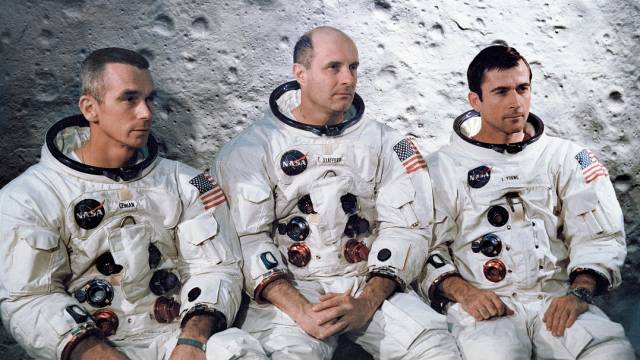
Apollo 11 |
| Launched: | 16 July 1969 |
| Lunar Landing: | 20 July 1969 |
| Returned To Earth: | 24 July 1969 |
| Mission: | First Manned Lunar Landing |
| Commander: | Neil Armstrong |
| Command Module Pilot: | Michael Collins |
| Lunar Module Pilot: | Buzz Aldrin |
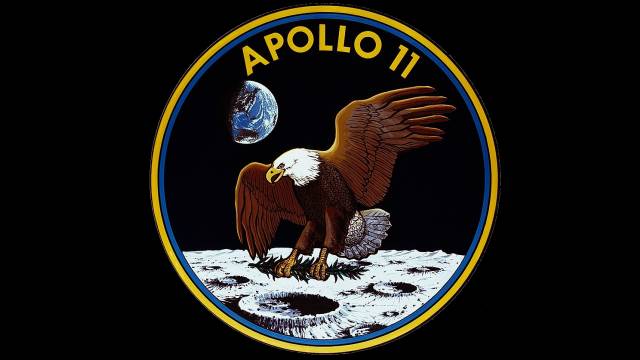
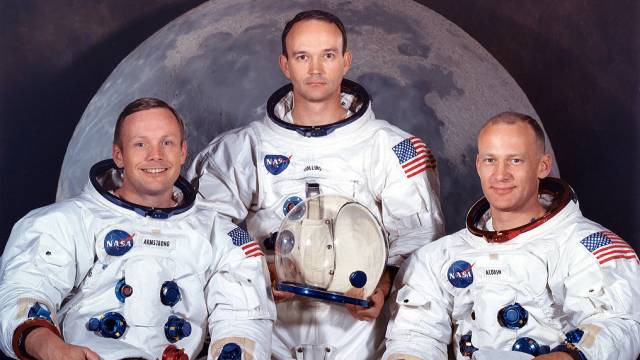
Apollo 11, was a truly historic mission and on July 21 1969, Neil Armstrong became the first man to step foot on the moon. Saying the immortal line:
"That's one small step for (a) man, one giant leap for mankind"
What is slightly less well known is that the lander was off course and had only seconds of fuel left before it crashed.
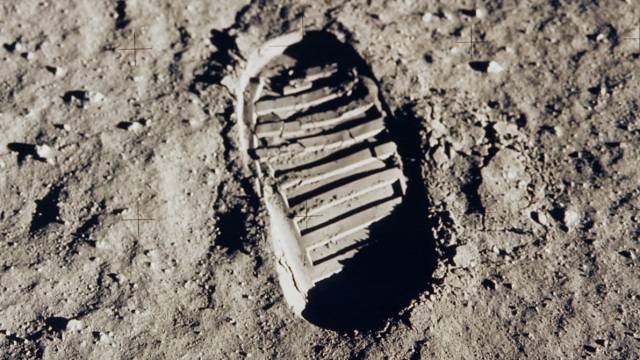
Apollo 12 |
| Launched: | 14 November 1969 |
| Lunar Landing: | 19 November 1969 |
| Returned To Earth: | 24 November 1969 |
| Commander: | Pete Conrad |
| Command Module Pilot: | Richard F. Gordon |
| Lunar Module Pilot: | Alan Bean |
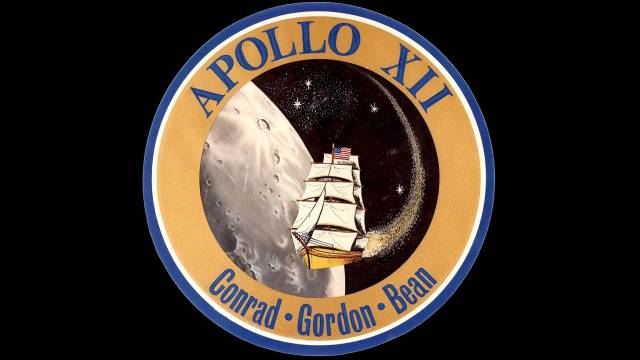
Apollo 12 was the second manned mission and achieved all of its main objectives, one of which was a precise landing.
One of the other main objectives was to recover parts from an earlier probe, Surveyor 3.
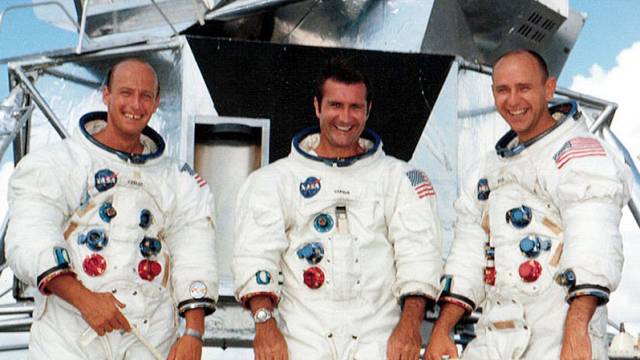
Apollo 13 |
| Launched: | 11 April 1970 |
| Returned To Earth: | 17 April 1970 |
| Mission: | Malfunction forced cancellation of lunar landing |
| Commander: | Jim Lovell |
| Command Module Pilot: | Jack Swigert |
| Lunar Module Pilot: | Fred Haise |
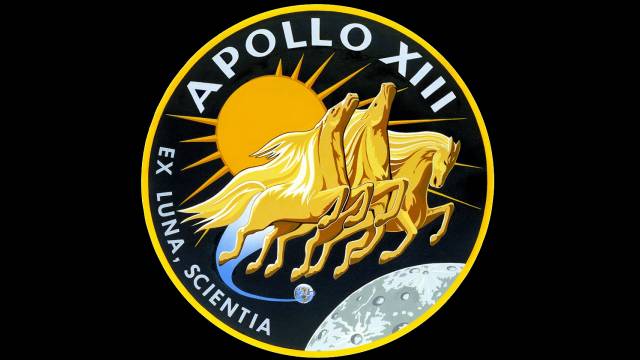
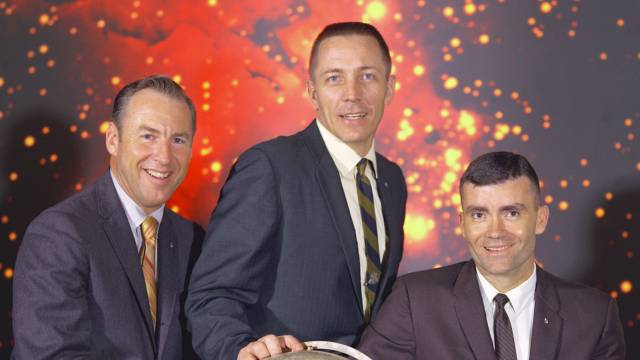
Two days into the journey to the moon an oxygen tank tank exploded. This left the main craft crippled, with limited batteries and oxygen, both of which would be needed for reentry.
The crew evacuated to the Lunar Module and used it as a makeshift 'lifeboat'.

The main problem that had to be overcome was the removal of carbon dioxide, and incompatible parts. So a 'jury-rigged' solution was created, which the astronauts nicknamed the 'mailbox'.
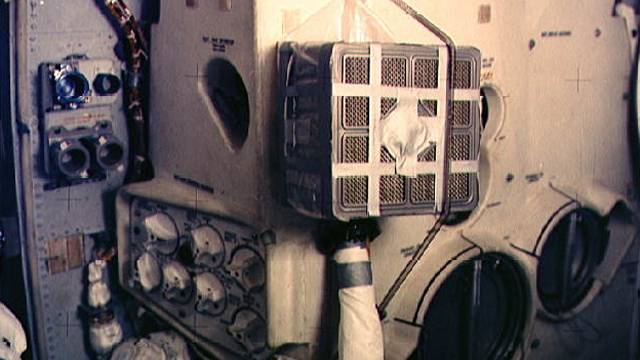
Thankfully, the astronauts were safely returned to Earth and many believe that rescue of the Apollo 13 crew, was NASA's finest achievement.
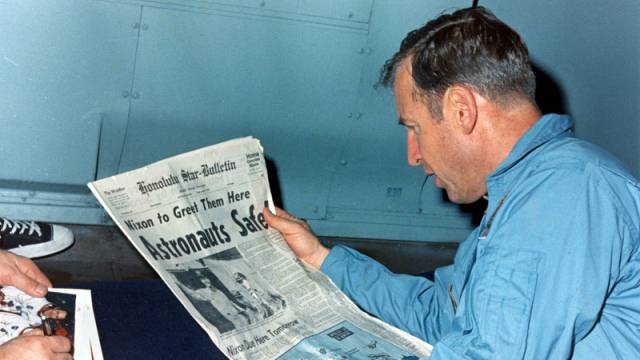
Apollo 14 |
| Launched: | 31 January 1971 |
| Lunar Landing: | 5 February 1971 |
| Returned To Earth: | 9 February 1971 |
| Commander: | Alan Shepard |
| Command Module Pilot: | Stuart Roosa |
| Lunar Module Pilot: | Edgar Mitchell |
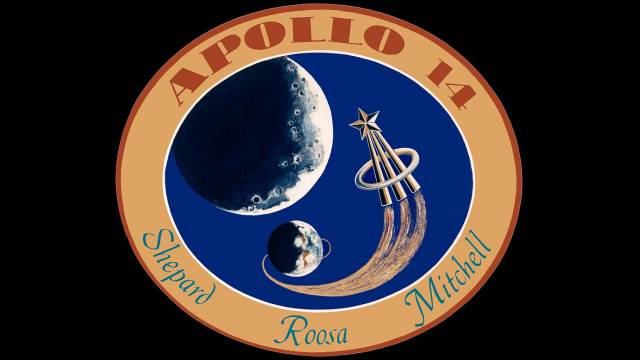
After the near disaster of Apollo 13, this was a successful mission. At the age of 47, the commander Alan Shepard was the oldest astronaut to walk on the moon. He was also the second man in space and the only member of the original group of seven Mercury astronauts to make the journey to the moon.
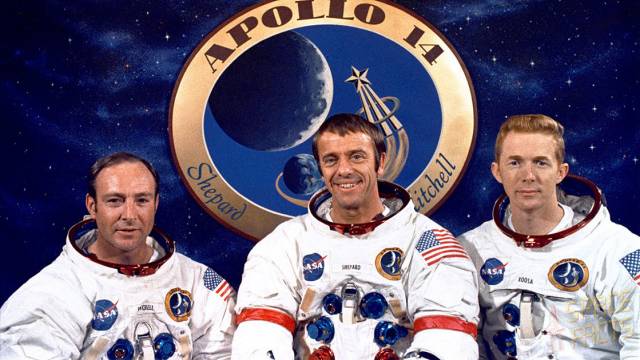
Apollo 15 |
| Launched: | 26 July 1971 |
| Lunar Landing: | 30 July 1971 |
| Returned To Earth: | 7 August 1971 |
| Commander: | David Scott |
| Command Module Pilot: | Alfred Worden |
| Lunar Module Pilot: | James Irwin |
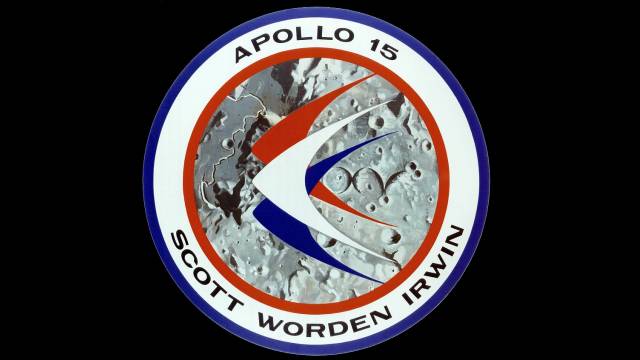
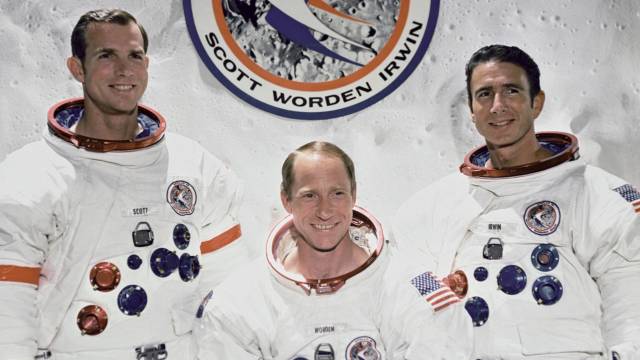
The Apollo 15 mission included the first use of the Lunar Rover. This was battery powered and traveled a total of 17.25 miles (27.76 km) during the mission.
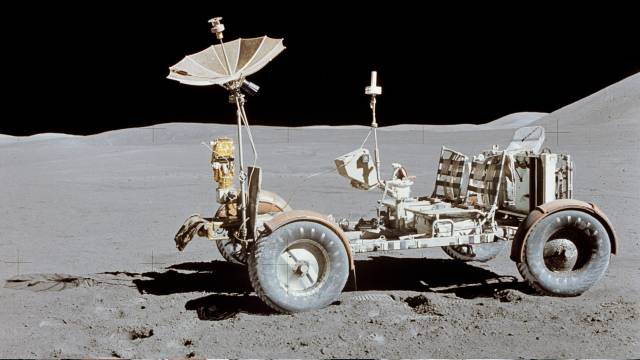
David Scott: "This is really a rock-and-roll ride, isn't it."
James Irwin: "I've never been on a ride like this before."
David Scott: "Oh, boy, I'm glad they've got this great suspension system on this thing."
Apollo 16 |
| Launched: | 16 April 1972 |
| Lunar Landing: | 20 April 1972 |
| Returned To Earth: | 27 April 1972 |
| Commander: | John Young |
| Command Module Pilot: | Ken Mattingly |
| Lunar Module Pilot: | Charles Duke |
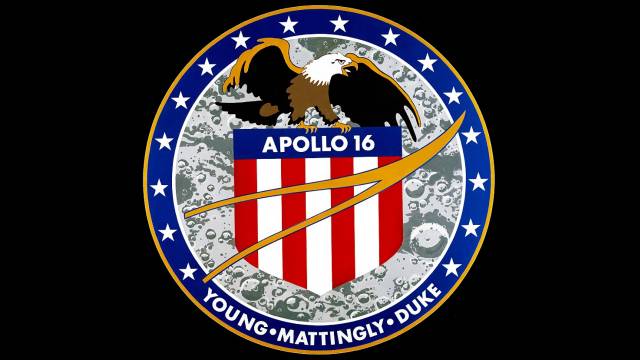
When traveling in the Lunar Rover, the crew managed to achieve speeds of 11 miles per hour (18 kilometers per hour).
When he was on the moon John Young heard that congress had approved the Space Shuttle program. Unknown to him, at the time, was the fact he would be the first Shuttle pilot.
The mission was cut short by a day as there were potential problems with the main craft and this would have bought some time to fix them.
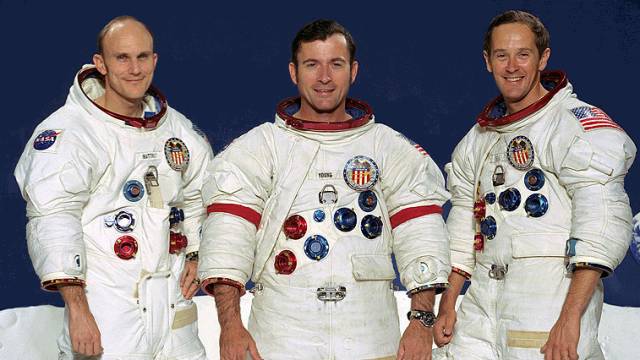
Apollo 17 |
| Launched: | 07 December 1972 |
| Lunar Landing: | 11 December 1972 |
| Returned To Earth: | 19 December 1972 |
| Commander: | Eugene Cernan |
| Command Module Pilot: | Ronald Evans |
| Lunar Module Pilot: | Harrison Schmitt |
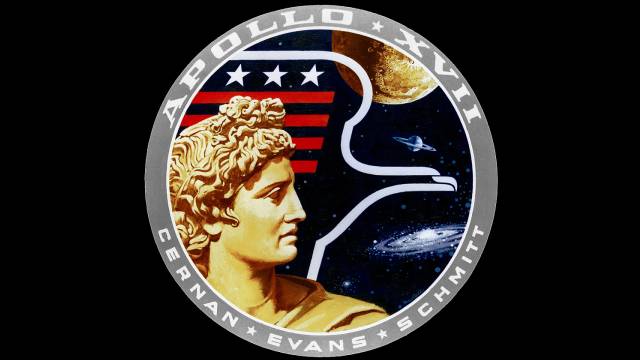
There were originally 13 manned Apollo missions planned, but due to budgetary constraints 3 were canceled. The Saturn V rockets were then used for the Skylab Project.
These cancellations meant that Apollo 17 was the last mission to the moon.
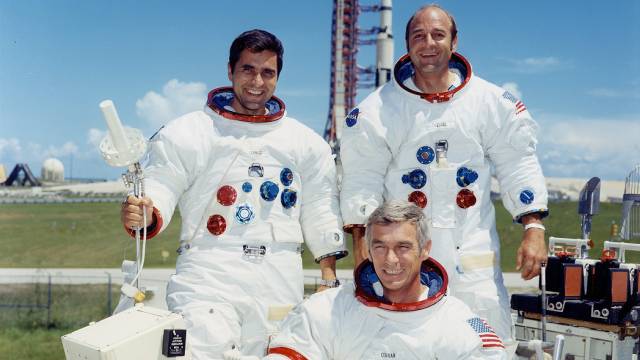
As he prepared to leave on the journey back to Earth, Eugene Cernan spoke these words on 14 Dec 1972.
"And, as we leave the Moon at Taurus-Littrow, we leave as we came and, God willing, as we shall return, with peace and hope for all mankind. Godspeed the crew of Apollo 17."
Since That Time |
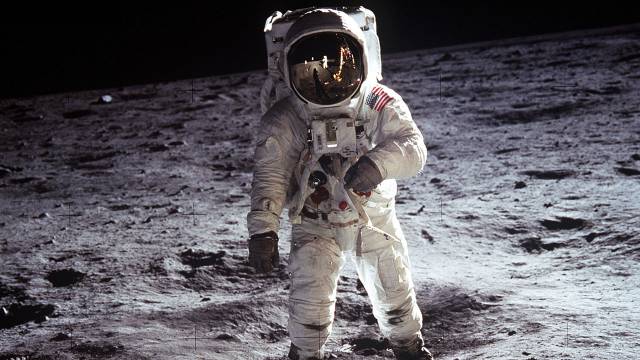
With the return of Apollo 17, the Apollo missions finished.
Since that time, many daring new adventures have been suggested. On some projects work was actually begun, but then canceled.
So, as the Apollo astronauts grow old, it is a sad fact that after the passage of forty years no one has traveled to the moon or beyond and we still do not know when they will.
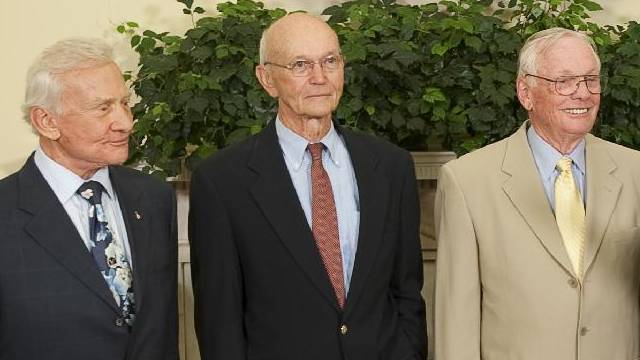
We will leave the last words to David Scott, as he stepped on the moon 31 July 1971.
"As I stand out here in the wonders of the unknown at Hadley, I sort of realize there's a fundamental truth to our nature. Man must explore."
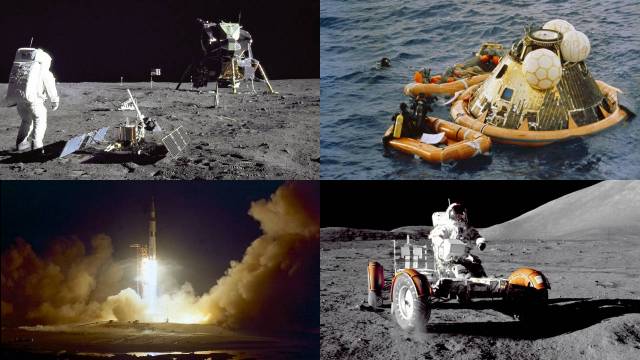
Cutting Room Floor |
Here for completeness, are the remaining Apollo missions, none of which left Earth Orbit.
Apollo 1 |
Early in the Moon landing project, there was a tragic fire in a simulator and three astronauts died: 'Gus' Grissom, Edward H. White and Roger B. Chaffee.
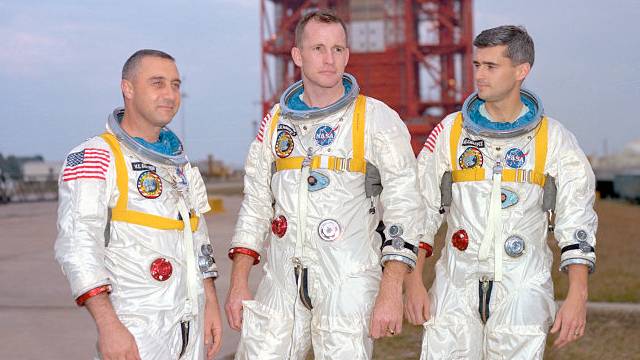
Unmanned Apollo Missions |
The next Apollo flights were all unmanned and concentrated on testing the Saturn rockets and equipment.
Apollo 7 |
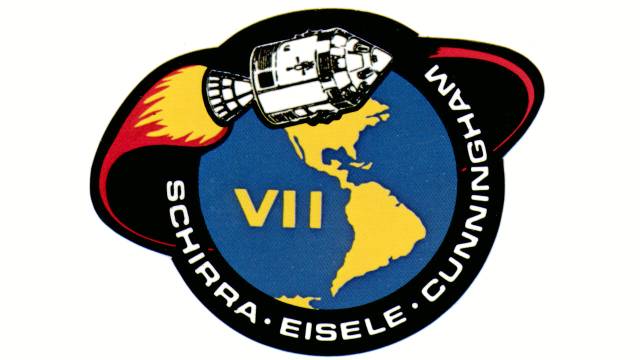
Apollo 7 was the first manned mission in the Apollo space program, its crew consisted of: Commander Walter M. Schirra, Donn F. Eisele and R. Walter Cunningham.
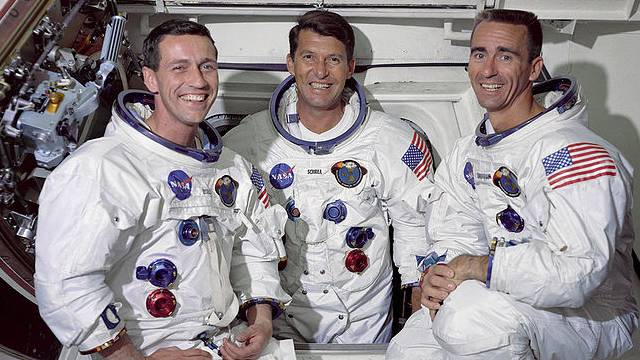
It flew in Earth orbit for over ten days. Apollo 7's mission was to check propulsion and other systems, such as life-support.
Apollo 9 |
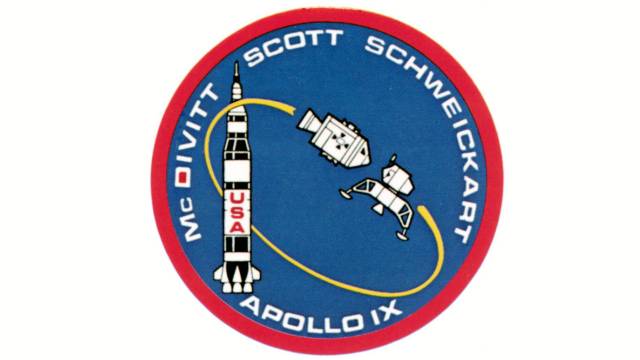
The crew of Apollo consisted of: Commander Jim McDivitt, Command Module Pilot David Scott and Lunar Module Pilot Rusty Schweickart.
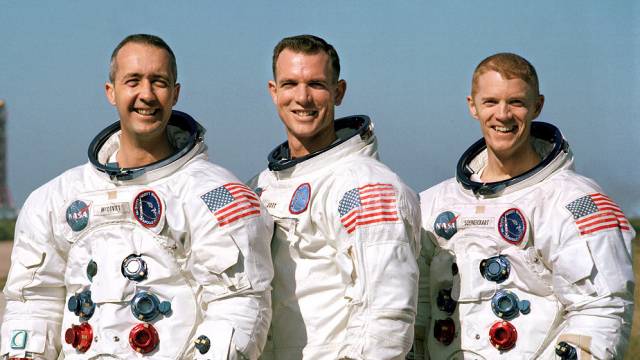
The spacecraft spent ten days in Earth orbit, testing critical systems including the first flight of the Lunar Module. Other tests included docking, the backpack life support systems and two spacewalks.
Similar Videos |
The Flight Of Apollo 11
A Curious Trip In The Solar System
Great Achievements In Space
Interesting Links |
